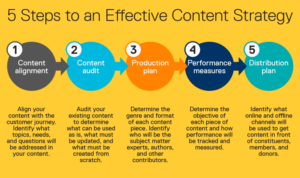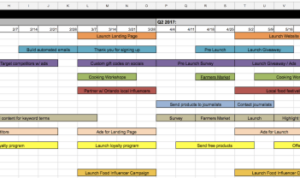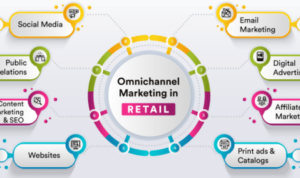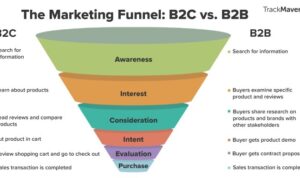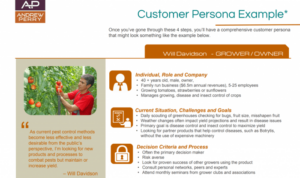Creating a Data-Driven Marketing Plan kicks off the ultimate marketing journey, diving deep into the realm of data-driven strategies, where success is measured by insights and innovation. Get ready to revolutionize your marketing game with the power of data!
Introduction to Data-Driven Marketing Plan

Data-driven marketing is a strategy that utilizes insights and information gathered from consumer interactions to make informed decisions about marketing tactics. By analyzing data such as demographics, behavior patterns, and preferences, businesses can tailor their marketing efforts to target specific audiences effectively.
The Importance of Leveraging Data in Marketing Strategies
Utilizing data in marketing strategies is crucial for businesses looking to maximize their reach and impact. Here are some key reasons why data-driven marketing is essential:
- Personalization: Data allows businesses to create personalized marketing campaigns that resonate with individual customers, leading to higher engagement and conversion rates.
- Targeting: By analyzing data, businesses can identify their target audience more accurately and deliver relevant content to potential customers, increasing the likelihood of a successful campaign.
- Optimization: Data-driven marketing enables businesses to track and measure the performance of their campaigns in real-time, allowing for adjustments and optimizations to improve results.
Examples of Successful Data-Driven Marketing Campaigns
Many companies have leveraged data-driven marketing strategies to achieve significant success. Here are a few examples of successful data-driven marketing campaigns:
- Netflix: By analyzing user data and viewing habits, Netflix recommends personalized content to its users, leading to increased user engagement and retention.
- Amazon: Through data analysis, Amazon provides personalized product recommendations to customers based on their browsing and purchase history, resulting in higher sales and customer satisfaction.
- Sephora: Sephora uses customer data to personalize marketing messages and offers, creating a more tailored shopping experience that drives customer loyalty and repeat purchases.
Setting Objectives and Goals
Setting objectives and goals is crucial when creating a data-driven marketing plan. By aligning marketing goals with data-driven insights, companies can ensure that their strategies are based on concrete information rather than guesswork.
Aligning Marketing Goals with Data-Driven Insights
To align marketing goals with data-driven insights, companies should first analyze the data available to them. This includes customer demographics, behavior patterns, and past campaign performance. By understanding this data, companies can identify opportunities for growth and set realistic goals that are achievable based on the insights provided.
Setting SMART Objectives
- Specific: Clearly define the objective to avoid ambiguity.
- Measurable: Establish metrics to track progress and success.
- Achievable: Ensure that the objective is realistic and attainable.
- Relevant: Align the objective with the overall marketing strategy and business goals.
- Time-bound: Set a deadline to create a sense of urgency and accountability.
Setting SMART objectives helps companies focus their efforts and resources on goals that are meaningful and measurable, leading to better outcomes.
Defining Key Performance Indicators (KPIs)
- Identify the most important metrics that align with your objectives.
- Track KPIs regularly to monitor progress and make informed decisions.
- Use KPIs to evaluate the success of marketing campaigns and make adjustments as needed.
Defining KPIs allows companies to measure the effectiveness of their marketing efforts and make data-driven decisions to optimize performance.
Data Collection and Analysis
To effectively implement a data-driven marketing plan, it is crucial to understand the methods for collecting consumer data, the tools and technologies for analyzing marketing data, and the best practices for interpreting data insights.
Methods for Collecting Consumer Data
- Surveys and Questionnaires: Conducting surveys and questionnaires can provide valuable insights into consumer preferences, behaviors, and opinions.
- Website Analytics: Analyzing website traffic, user behavior, and engagement metrics can help in understanding consumer interactions with your online platforms.
- Social Media Monitoring: Monitoring social media platforms for mentions, comments, and conversations related to your brand can offer insights into consumer sentiment and trends.
- Customer Relationship Management (CRM) Systems: Utilizing CRM systems to track customer interactions, purchases, and preferences can help in creating targeted marketing campaigns.
Tools and Technologies for Analyzing Marketing Data, Creating a Data-Driven Marketing Plan
- Google Analytics: A widely used tool for tracking and analyzing website traffic, user behavior, and conversions.
- Marketing Automation Platforms: Platforms like HubSpot, Marketo, or Mailchimp offer features for analyzing campaign performance and customer interactions.
- Data Visualization Tools: Tools like Tableau or Power BI help in creating visual representations of marketing data for easy interpretation.
- Customer Data Platforms (CDPs): CDPs consolidate customer data from multiple sources to create a unified view for analysis and decision-making.
Interpreting Data Insights and Making Data-Driven Decisions
- Identify Key Performance Indicators (KPIs): Define relevant KPIs to measure the success of marketing campaigns and initiatives.
- Segmentation Analysis: Segmenting data based on demographics, behavior, or other factors can provide targeted insights for personalized marketing strategies.
- A/B Testing: Conducting A/B tests to compare different marketing approaches and determine the most effective strategies based on data-driven results.
- Continuous Monitoring and Optimization: Regularly monitor data, analyze trends, and optimize marketing efforts based on data insights to achieve better results.
Personalization and Targeting: Creating A Data-Driven Marketing Plan
Personalization and targeting are crucial aspects of data-driven marketing. By leveraging data, marketers can create highly personalized campaigns that resonate with their target audience, leading to increased engagement and conversion rates.
Role of Data in Personalized Marketing Campaigns
Data plays a vital role in personalizing marketing campaigns by providing insights into consumer behavior, preferences, and interests. Marketers can use data to segment their audience based on demographics, psychographics, past interactions, and more. This segmentation allows for the creation of tailored messaging and offers that are more likely to appeal to individual consumers, ultimately driving better results.
Enhancing Targeting Efforts through Data Segmentation
Data segmentation involves dividing a target audience into smaller, more defined groups based on specific characteristics or behaviors. By segmenting data, marketers can better understand their audience and deliver relevant content to each segment. For example, an e-commerce retailer may segment their audience based on purchase history, browsing behavior, or geographic location to deliver targeted promotions and recommendations.
Examples of Successful Personalized Marketing Strategies
– Amazon is a prime example of a company that excels in personalized marketing. By analyzing customer data and browsing behavior, Amazon offers personalized product recommendations, tailored emails, and targeted promotions that drive sales.
– Spotify leverages user data to create personalized playlists and recommendations based on listening history and preferences. This personalized approach enhances the user experience and encourages continued engagement with the platform.
– Starbucks uses customer data to send personalized offers and promotions through their mobile app. By analyzing purchase history and location data, Starbucks can deliver targeted discounts and rewards to individual customers, driving repeat business and loyalty.
Implementing Data-Driven Strategies

To successfully implement data-driven strategies into marketing campaigns, companies need to follow a structured approach. By integrating data-driven insights, businesses can optimize their marketing efforts and improve overall performance.
Testing and Optimization
- Start by conducting A/B testing to compare different versions of marketing campaigns and identify the most effective strategies.
- Utilize data analytics tools to track key performance indicators (KPIs) and measure the impact of marketing initiatives.
- Regularly analyze data feedback to identify trends, patterns, and areas for improvement.
- Optimize marketing strategies based on data insights to enhance engagement, conversion rates, and overall ROI.
Creating a Feedback Loop
- Establish a process for collecting customer feedback through surveys, reviews, and social media interactions.
- Utilize customer relationship management (CRM) systems to track customer interactions and preferences.
- Analyze feedback data to identify opportunities for product or service improvements and marketing optimization.
- Implement changes based on feedback to continuously enhance the customer experience and drive business growth.
Measuring ROI and Performance
In the world of data-driven marketing, measuring return on investment (ROI) is crucial to determine the success of your initiatives. By analyzing campaign performance metrics, you can gain valuable insights into what works and what doesn’t, allowing you to refine your strategies for maximum impact.
Tracking ROI
- Calculate ROI by subtracting the cost of your marketing campaign from the revenue generated, then dividing that by the cost. This will give you a clear picture of how effective your efforts have been in driving revenue.
- Use tools like Google Analytics to track key performance indicators (KPIs) such as conversion rates, click-through rates, and customer acquisition costs. These metrics will help you understand the impact of your marketing activities.
- Regularly analyze and compare ROI across different campaigns to identify trends and patterns that can inform future strategies.
Analyzing Performance Metrics
- Track metrics like website traffic, engagement rates, and lead generation to gauge the effectiveness of your marketing efforts.
- Monitor customer behavior and interactions with your brand to identify areas for improvement and optimization.
- Use A/B testing to compare different marketing tactics and determine which ones yield the best results in terms of ROI.
Refining Strategies for Maximum ROI
- Utilize data insights to optimize targeting and personalization efforts for better engagement and conversion rates.
- Experiment with different messaging, visuals, and calls to action based on performance data to see what resonates best with your target audience.
- Continuously adapt and evolve your strategies based on performance feedback to ensure you are maximizing ROI and driving sustainable growth.







